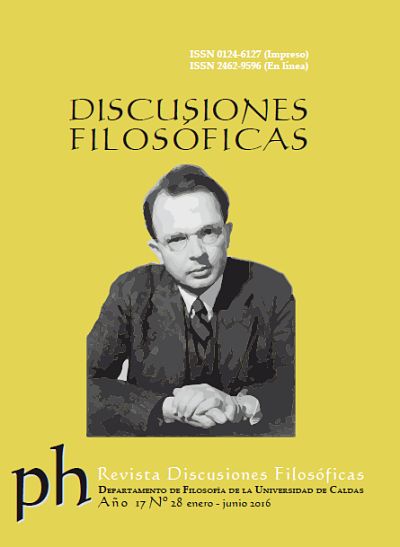Authors
Abstract
This paper focuses on what is known in the literature on the semantics and pragmatics of definite descriptions as “the argument from convention”. This argument purports to show that eferential uses of definite descriptions are a semantic phenomenon. A key premise of the argument is that none of the pragmatic alternatives (any one of a variety of Gricean accounts of referential uses) is successful. I argue that no good reason is offered to support this claim. I conclude that the argument from convention fails to be compelling
References
___. “Standardization revisited”. Pragmatics: Critical Concepts. Vol. IV: 712-722. A. Kasher (ed.). London and New York: Routledge, 1998. Print.
___. “Seemingly Semantic Intuitions”. Meaning and Truth. Investigations in Philosophical Semantics. J. K. Campbell, M. O’Rourke, D. Shier (eds.). New York, NY: Seven Bridges Press, 2002. 21-33. Print.
___. “Descriptions: Points of Reference”. Descriptions and Beyond. M. Reimer and A. Bezuidenhout (eds.). Oxford: Oxford University Press, 2004. Print.
___. “Referentially Used Descriptions: A Reply to Devitt”. European Journal of Analytic Philosophy. Vol. 3, No. 2. 2007.
Bontly, Thomas D. “Modified Occam’s razor: Parsimony, pragmatics, and the acquisition of word meaning”. Mind and Language. 20 (3). 2005: 288–312. Print.
Carnap, Rudolf. “Meaning and Synonymy in Natural Language”. Meaning and Necessity. Chicago: University of Chicago Press, 1947. Print.
Cresswell, Julia. Oxford Dictionary of Word Origins. Oxford: Oxford University Press, 2009. Print.
Devitt, Michael. “Meanings and psychology: A response to mark Richard”. Noûs. 31 (1) 1997: 115-131. Print.
___. “The Case for Referential Descriptions”. Descriptions and Beyond. M. Reimer and A. Bezuidenhout (eds.). Oxford: Oxford University Press, 2004. Print.
___. “Referential Descriptions and Conversational Implicatures”. European Journal of Analytic Philosophy. Vol. 3, No. 2. 2007. Print.
___. “What Makes a Property ”Semantic”?” Perspectives on Pragmatics and Philosophy. A. Capone, F. Lo Piparo, and M. Carapezza, (eds.). Switzerland: Springer International Publishing, 2013. Print.
___. “Good and Bad Bach”. Croatian Journal of Philosophy. 13 (2) 2013: 169-200. Print.
Donnellan, Keith. S. “Reference and definite descriptions”. Philosophical Review, 75 (3) 1966: 281-304. Print.
Elbourne, Paul. Definite Descriptions. Oxford: Oxford University Press, 2013. Print.
Gibbs, Raymond W. Jr. “Psycholinguistic Experiments and LinguisticPragmatics”. Experimental Pragmatics. Ira A. Noveck and Dan Sperber (eds.). Palgrave Macmillan, 2004. 50-71. Print.
Grice, Paul H. “Vacuous Names”. Words and Objections. D. Davidson, J. Hintikka (eds.) Dordrecht: Reidel, 1969. 118-145. Print.
___. “Logic and Conversation”. Studies in the Way of Words. Cambridge MA: Harvard University Press, 1989. 22-40. Print.
___. “Further Notes on Logic and Conversation”. Studies in the Way of Words. Cambridge MA: Harvard University Press, 1989. 41-57. Print.
Heim, Irene. “Definiteness and Indefiniteness”. Semantics: An International Handbook of Natural Language Meaning. C. Maienborn, K. von Heusinger and P. Portner (eds.). De Gruyter Mouton. 2011. Print.
Kripke, Saul. “Speaker’s Reference and Semantic Reference”. Midwest Studies in Philosophy. 2, 1977: 255–276. Print.
Marti, Genoveva. “Direct Reference and Definite Descriptions”. dialectica. 62(1), 2008: 43-57. Print.
Moldovan, Andrei. “Incomplete Descriptions and the Underdetermination Problem”. Research in Language. Vol 13. No 4. 2015: 352–367. Print.
Neale, Stephen. Descriptions. Cambridge, MA: MIT Press, 1990. Print.
___. “This, That, and the Other”. Descriptions and Beyond. M. Reimer and A. Bezuidenhout (eds.). Oxford: Oxford University Press, 2004. Print.
Peacocke, Christopher. “Proper Names, Reference and Rigid Designation”. Meaning, Reference and Necessity. S. Blackburn (ed.). Cambridge: Cambridge University Press, 1975. Print.
Phillips, Ben. “Modified Occam’s Razor”. Australasian Journal of Philosophy. 90 (2). 2012: 371-382. Print.
Recanati, François. “Contextual Dependence and Definite Descriptions”. Proceedings of the Aristotelian Society. 87. 1987: 57-73. Print.
___. Direct Reference: from Language to Thought. Oxford: Blakwell, 1993. Print.
___. Literal Meaning. Cambridge: Cambridge University Press, 2004. Print.
Reimer, Marga. “Demonstrating with descriptions”. Philosophy and Phenomenological Research. 52 (4). 1992: 877-893. Print.
___. “Donnellan’s Distinction/Kripke’s Test”. Analysis. 58(2). 1998: 89- 100. Print.
Ruhl, Charles. On Monosemy: A Study in Linguistic Semantics. Albany: SUNY Press, 1989. Print.
Sainsbury, Mark. Reference without Referents. Oxford: Clarendon Press, 2005. Print.
Schoubye, Anders J. “Against the argument from convention”. Linguistics and Philosophy. 35(6). 2012: 515-532. Print.
Strawson, Peter. F. “On Referring”. Mind. 59. 1950: 320–344. Print.

 pdf (Español (España))
pdf (Español (España))
 FLIP
FLIP




























